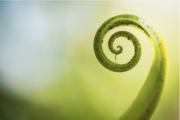Imaginal Research Tools Part 2
In my last article I discussed the tools in alchemical hermeneutics that could be useful in your exploration of the unconscious. These tools came out of transference dialogues, which I will write about in this article. Both alchemical hermeneutics and transference dialogues can be used in Imaginal Research (Romanyshyn).
As I mentioned in an earlier article (Imaginal Research) the research work begins by being drawn towards, really interested in, and fascinated by a topic: ‘that it is through the complex that one is drawn into the work’ (Romanyshyn). Jung states that ‘complexes are psychic fragments which have split off owing to traumatic influences [and] interfere with the intentions of the will and disturb conscious performance.’ To sink into the work Romanyshyn suggests a process he calls transference dialogues, based on Jung’s ‘active imagination’. There are two phases.
Phase One: The Ritual Space of Reverie
Here the researcher consciously creates a space away from the logical thinking part of the research, to be in reverie allowing ‘the unconscious sense of the work to speak’. You might like to think of reverie as pondering or daydreaming. Reverie is useful when the work is becoming ‘overwhelming, or more frequently, when the work seems to be stuck’. Reverie opens ‘a place for the depths of the work to enter into the imaginal space between nocturnal dreams and daytime awareness’.
How do you put yourself into a place of reverie? Think of a summer day where you are laying on your back in a meadow of daisies, watching the clouds drift past. Or sitting on a quiet beach, listening to the waves surging forward and sucking back out over the wet sand. I find that when I am gardening, my thoughts drift. You get the idea. Once you are in this space, then look out for ‘a memory that surfaces’ or ‘a longing for some vague place or time’ or some ‘image’. ‘Working with one’s reveries, one might discover “who” is in the work beyond one’s own complex participation’.
Phase Two: Transference Dialogues
Another way of ‘letting go’ is ‘to engage the work directly and systematically in the transference field that exists between himself or herself and the work’. Romanyshyn proposes 5 steps for doing this.
Step 1: Setting the Stage
Romanyshyn suggests that ‘the mood of reverie, the attitude of negative capability and the gestures of hospitality create the ritual place of play for the transference dialogues between a researcher and his or her work’. We have already touched on reverie. ‘Negative capability fosters the capacity to remain open to experience without judging whether it is true or false’. So far, we are pondering without judging. The last behaviour we need to adopt is hospitality. To welcome who or what might appear for us. Remember, Romanyshyn is suggesting, that we are called into research by our complex, but ‘research with soul in mind, is a work of redemption, a work in service to the wait and weight of history in the work, a piece of cultural-historical therapeutics in which the researcher functions as a witness for what has been left behind’.
Step 2: Invitations
The researcher begins by ‘announcing the topic that he or she is engaging’ and be prepared to be ‘surprised’ by who answers. The who might be from either a ‘Personal’, a ‘Cultural-Historical’, ‘Collective-Archetypal’ or a ‘Eco-Cosmological’ level. As an example, for the ‘Personal’ level, you might want to ask questions such as: ‘Who is there in my family, biography, and/or history who has something to say about this work?’. You can read about more questions in his book.
Step 3: Waiting with Hospitality
Romanyshyn notes that now ‘one has to learn to wait without desire of any sort’. At the same time the researcher is not waiting for a ‘clear and distinct idea to form’, it is more ‘subtle’ than that. Look out for ‘a mood, a dream image, or any spontaneous image’ or ‘bodily sensations’.
Step 4: Engaging the “Others” in the Work
Whatever has arisen in the last step can now be given ‘some concrete shape or form’. They can be ‘drawn, painted, sculptured, or written as a dialogue between the researcher and the others’ in the work’. Then they can be put down for a few days or weeks before the next step.
Up until now the researcher has been ‘the witness’ to information from the unconscious or the other. Now there is a metaphorical change of hats, and the researcher leans towards ‘becoming the critic’. Romanyshyn wants ‘to underscore the point that the drawings or the painting or the scripts that arise in the transference field are not the data. They are pathways into the unknown work, portals into the work’s undreamed possibilities’.
Step 5: Scholarly Amplification
Now ‘the researcher amplifies the material of the dialogues through scholarly work’.
He gives a useful example of a student who gathered the ‘image and figure of the jaguar’ who then need ‘scholarly amplification of the image through myth and symbol and an exploration of its presence and significance in Mayan culture’.
Conclusion
Although this is a research process, I think there are some tools in here that you will find useful on your psychotherapy journey. For instance, make sure you find some space to slow down and ponder. Be open to the subtle, that comes in the form of images or moods or body sensations. Consider elaborating what arrives by enhancing it: drawing, sculpting, or writing. You might be amazed at what happens.
Gratitude to the photographer: Pensive Man Photo by Kazi Mizan on Unsplash
Jung, G. G. (1995) Memories, Dreams, Reflections. Harper Collins Publishers
Romanyshyn, R. D. (2013). The Wounded Researcher. Research with Soul in Mind. Spring Journal Books
